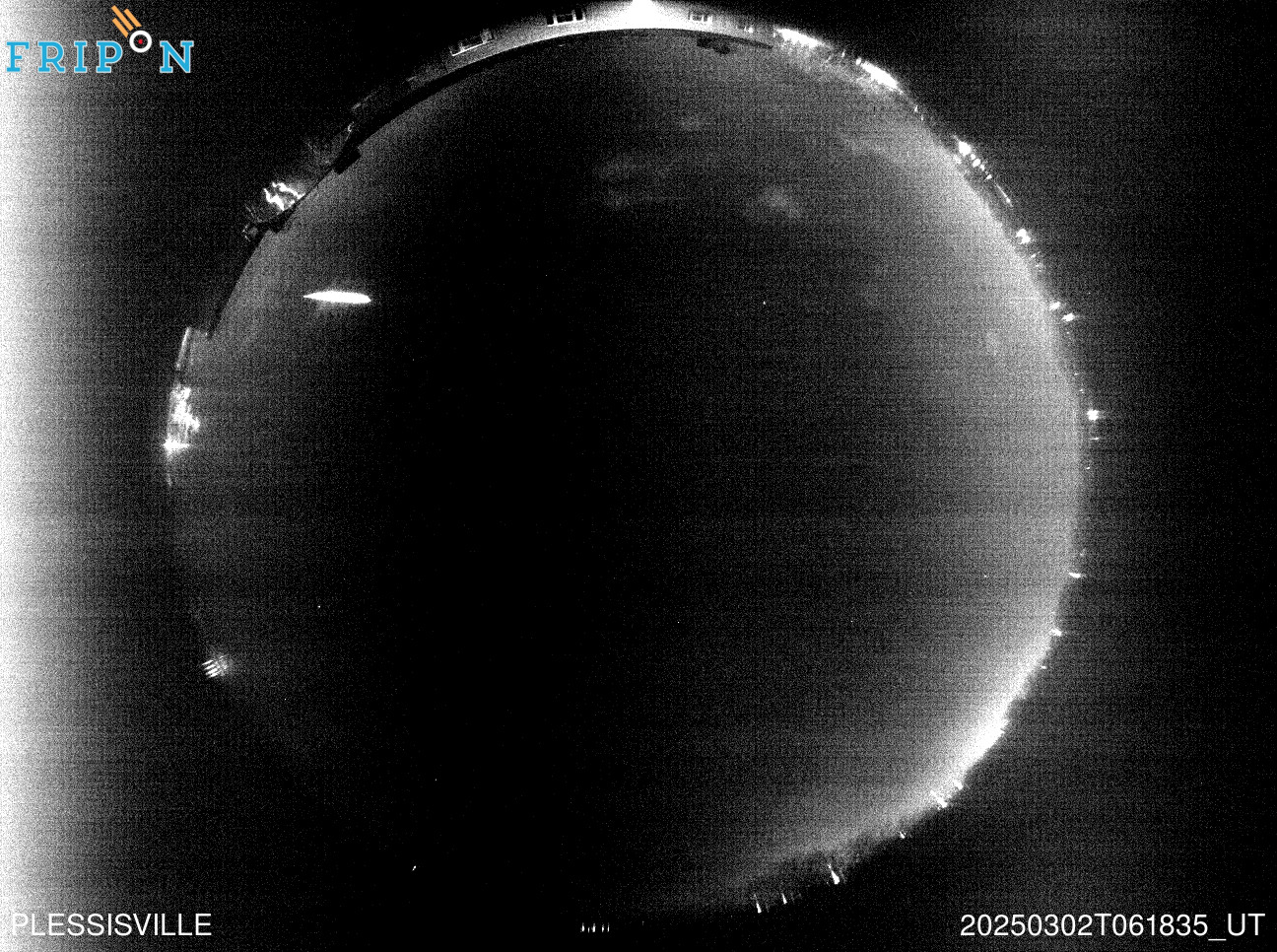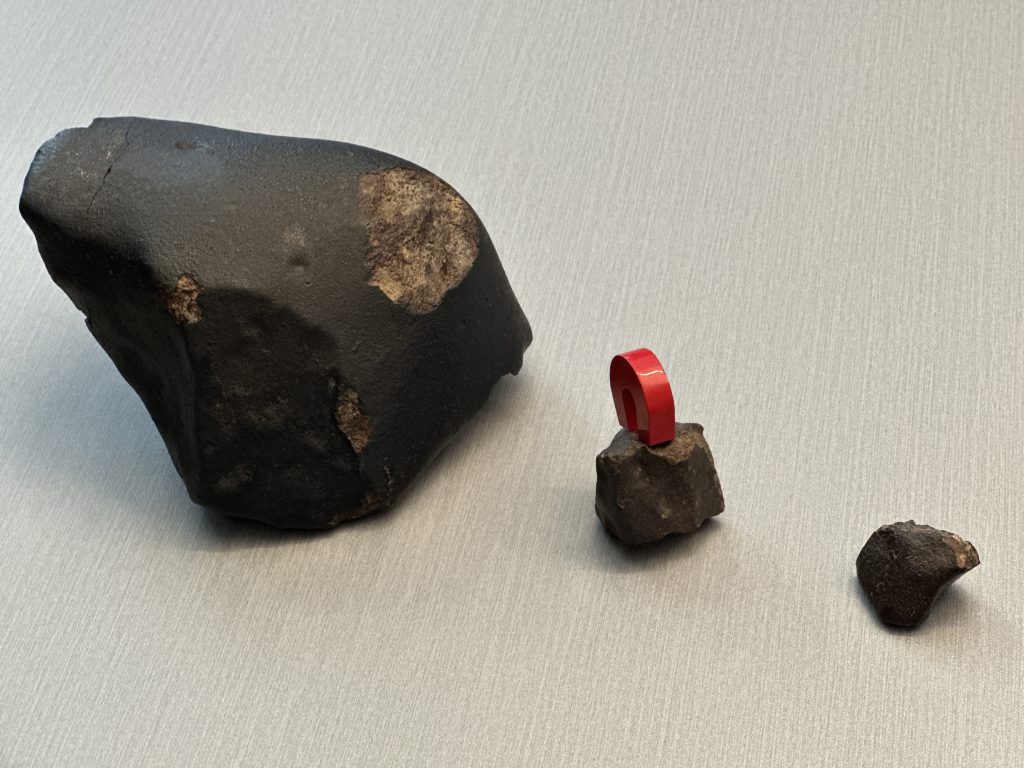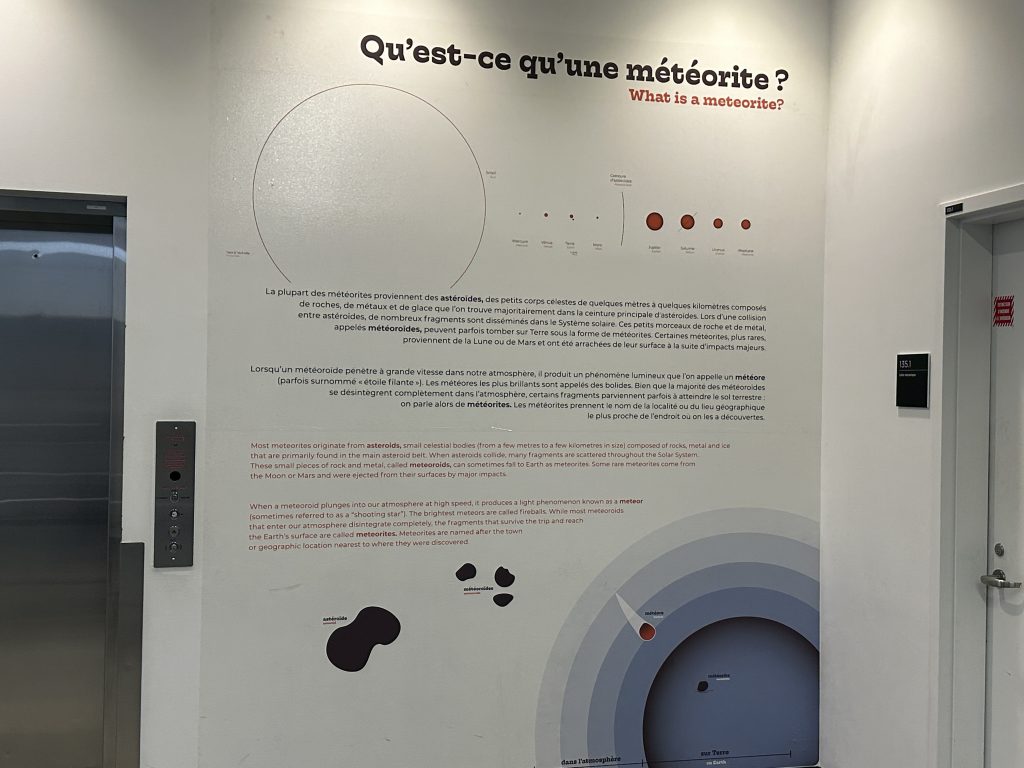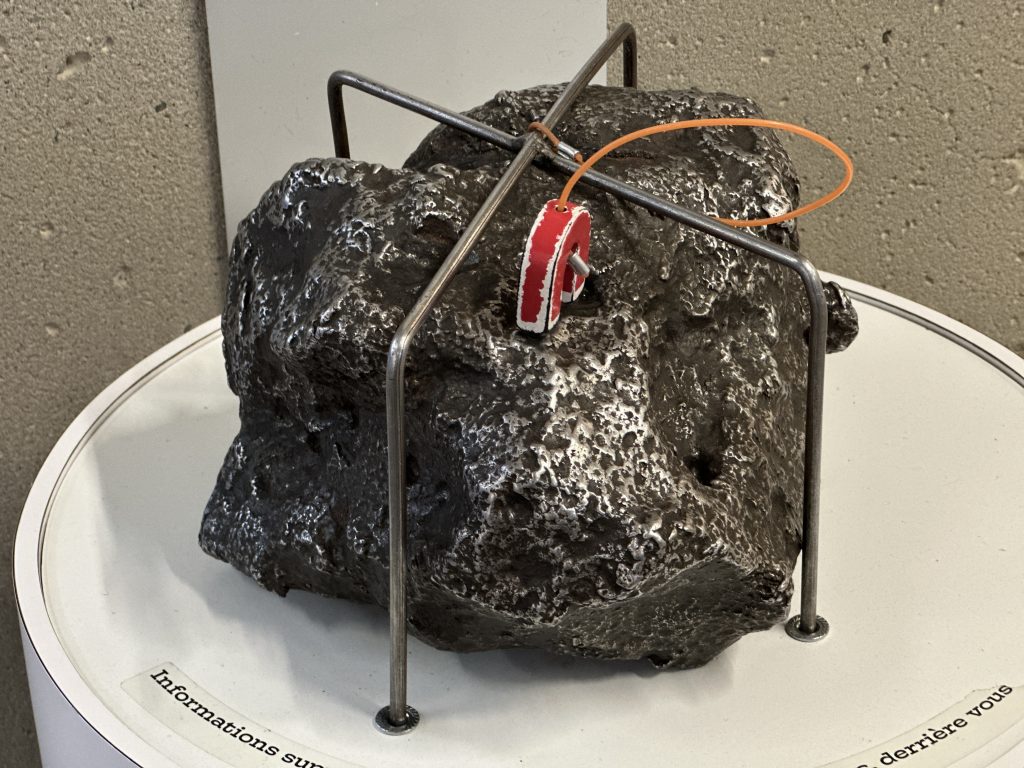Quebec’s meteorite: a cosmic surprise

Posted March 4, 2025 9:12 am.
Last Updated March 4, 2025 4:38 pm.
Have you ever had the stellar experience of spotting a meteorite falling from the sky? It seems pretty impossible, right? After all, it doesn’t exactly happen every day. But it did happen again in Quebec.
On March 2, at 1:18 a.m. local time, Quebec experienced its first meteorite fall since the deployment of the Detection and Observation of Meteors (DOMe) at Montreal’s Planetarium in 2018.

“We don’t have a lot of meteorites from Quebec. We only have five, which is very low compared to the size of Quebec, right? But it’s the first time we saw a meteorite falling with our cameras. And that’s really important to us because when you find a meteorite, you essentially have a piece from the solar system that’s landing into your lab,” said Auriane Egal, Astrophysicist and Scientific Advisor at the Planetarium.
“Our first calculations indicate that we have a meteorite, a small stone of about 30 to 90 grams, that has landed east of Drummondville near the Saint-François River,” said Egal.

It was detected by six of the Planetarium’s network cameras, as well as cameras from the Global Meteor Network.
“We have 11 cameras covering the lower Saint-Laurent Valley. And the fireball was detected by six of them and was also recorded by at least two cameras from the global meteor network. And so when we process the data, we’re all sharing our data tools and expertise. So we use all the data that was collected for this specific event to compute the trajectory and estimate the landing location of the meteorites,” explained Egal.
“It’s great to have the rock and to analyze it, but what we want to know is where it came from, from which region of the solar system it came from. And so that’s why it’s so important to observe that with our cameras because thanks to DOMe, for example, we’re able to compute the orbit of the meteorites so to know what was its trajectory before colliding with the Earth and exactly where it came from in the solar system. So that’s why we’re so excited about this event.”

What is a meteorite?
Egal explains that meteorites are essentially space rocks that collide with our planet. She says that usually, everything falling toward us disintegrates completely in the atmosphere, but sometimes, the rock is large enough or dense enough to survive atmospheric entry, with pieces reaching the ground. What you find on the ground are meteorites.

She added that, “Meteorites have just an amazing scientific value for us because they’re witnesses of the first stages of our solar system formation. So they’re going to give us information about the age of the solar system, how it was formed, how it evolved. And it’s kind of a rare event.”
“If you look at the overall picture, we expect around 500 meteorite falls per year, which may seem like a lot. For example, in Quebec, since we installed the DOMe Camera Network in 2018, this is the first time we’ve had a realistic chance of finding a meteorite on the ground.”

Observing a meteorite
Egal says that observing a meteorite fall is a very impressive event because you see these huge fireballs, bright lights crossing the sky. She adds that sometimes, you can even hear sounds and it’s very impressive.
“It’s a rare phenomenon, and almost everybody has seen shooting stars or meteors before, but fireballs are much more amazing because they’re so bright.”

Due to recent snowfalls, the chances of finding a meteorite in the area have been reduced.
Egal explained that the search for the stone that landed near Drummondville is difficult due to the recent snowfalls this past week. When a meteorite lands in fresh snow, it creates a hole and gets buried beneath the snow. This is not ideal for them, but she says there is still a chance the meteorite landed on a road, a roof, or another area where the snow has been compacted. In that case, the snow could actually help them find it because a compact layer of white snow with a black rock on top would make the meteorite easier to find.
It can sometimes be difficult to distinguish a rock from a meteorite. Egal explained that when you have a fresh meteorite, it’s relatively easy to identify because of the fusion crust. She says that what happens is that as the rock enters the atmosphere, it essentially burns, forming a thin layer of burnt material around it. This is what they call the fusion crust. Egal explains that that’s why meteorites often have a very characteristic black brownish colour with a smooth, glassy surface. She says you won’t see unusual features like air bubbles or large minerals inside; instead, you’ll find this very thin black layer around the rock.

“If your meteorite is broken, you’re going to see that the exterior of it and its interior are very different. And another thing that’s interesting is that most meteorites are reaching metal. Most of them are iron, nickel. So they’re going to feel heavy on your hand compared to their sizes. And if you approach a magnet to it, it’s possible that the magnet will just stick to the rock,” Egal said.
The Planetarium encourages the public to take advantage of their outings in the region to try to locate this rock from the sky. They say remember to be safe and respect public property.
“We’re really counting on the help of people living in the area or some passionate hunters that are trying to find a rock. We’re not going to lie, the chances are very small finding it because the stone is quite small and we have all this snow around. So that’s why the planter didn’t organize an official search campaign over there because the area is really white and chances of finding it are low. But you never know, sometimes if you just walk your dog or you’re having your running, you know, just running outside into the woods, just take the opportunity to look around you because you might feel well find it,” said Egal.
“Just stay safe if you decide to go outside to look for a meteorite. It’s wintertime, so it can be complicated to search the ground. So just stay safe. And if you believe you have found something interesting, don’t hesitate to write to us here at the planetarium because we can help you identify your rock, say if it’s an extraterrestrial rock or just something from the earth, and help you guide your search too.”








